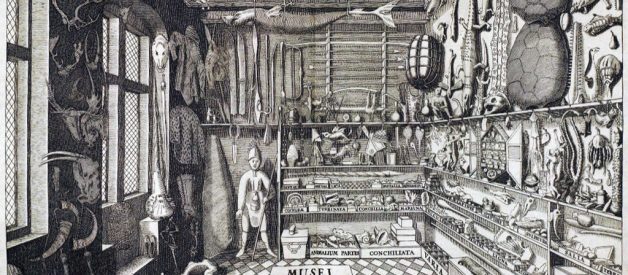What they were, why they disappeared, and why they?re so popular now
Cabinets of curiosity are back in fashion. These premodern museums (also known by their German name, wunderkammer) are, it seems, also post-modern museums. They were created before the rules that shape the modern museum came into play, and they seem to offer a way around those rules today.
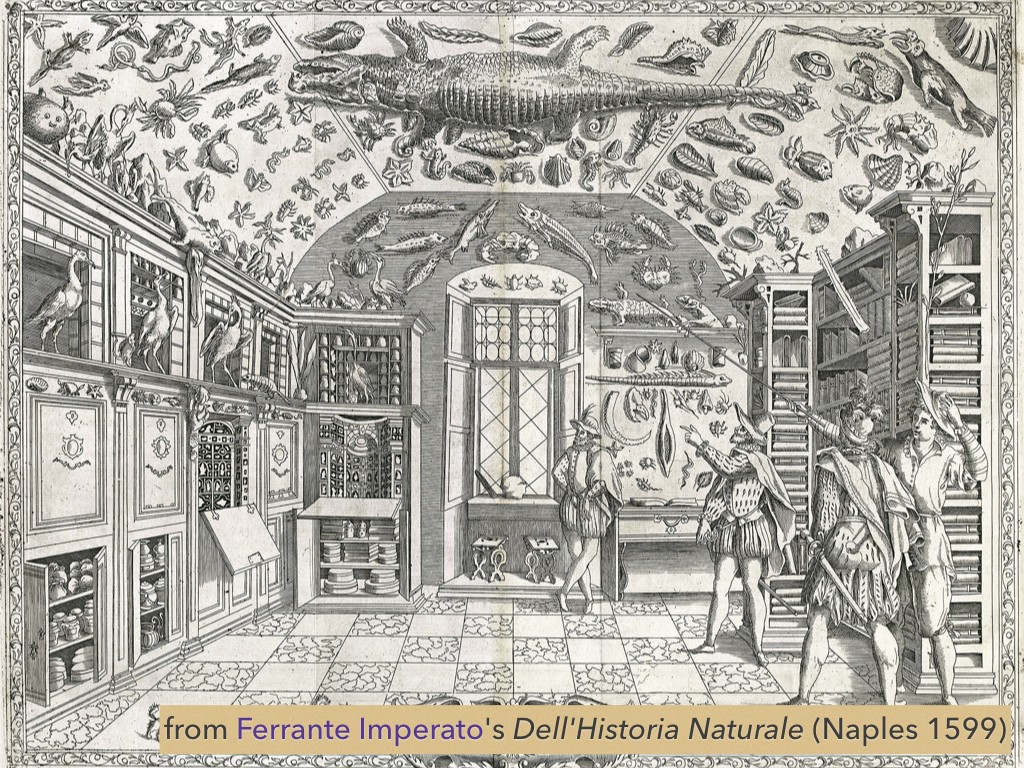

 Early Modern Wunderkammer
Early Modern Wunderkammer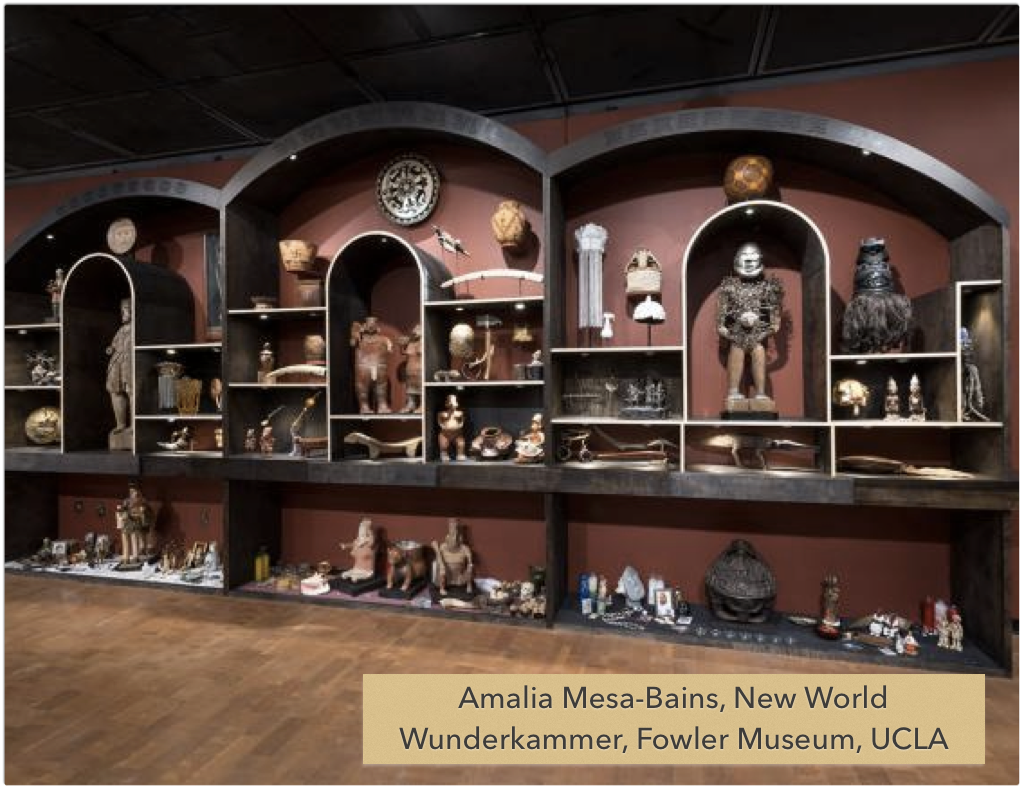
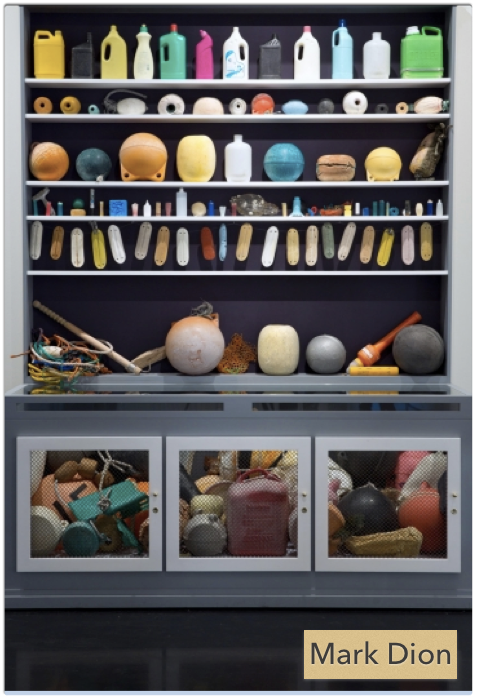
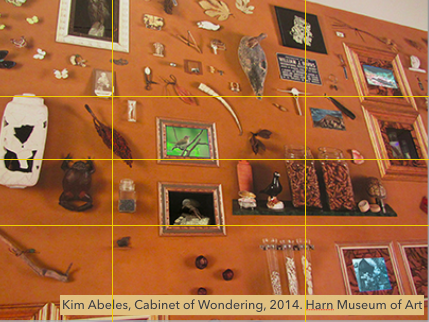 Contemporary Wunderkammer
Contemporary Wunderkammer
1. The wunderkammer
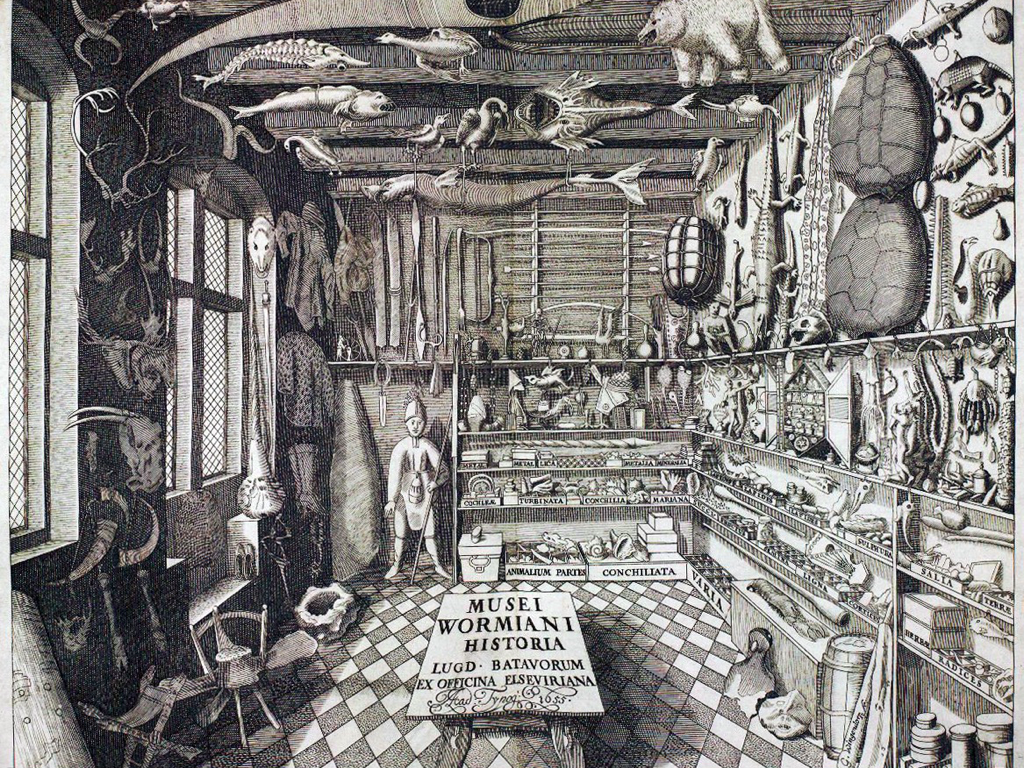 Musei Wormiani, 1655. Not a museum of worms, but Ole Worm?s museum. From WIkipedia.
Musei Wormiani, 1655. Not a museum of worms, but Ole Worm?s museum. From WIkipedia.
Wunderkammer were the common way to display collections from about 1550 to about 1750. Ole Worm?s Musei Wormiani, of 1655, offers a fine example of the oddness of an early modern cabinet of curiosity. To the modern eye it is a mishmash of artifacts and arrangements. Objects cover the surfaces, even the ceiling. Taxidermied specimens share space with monstrosities and ethnographic items. There?s some order here ? there are boxes with labels ? but its not an order we?re used to seeing. Is it aesthetic? Phylogenetic? By location? Is there a clear line between human and animal, natural and artificial? The cabinet of curiosities doesn?t fit our modern ideas of arrangement.
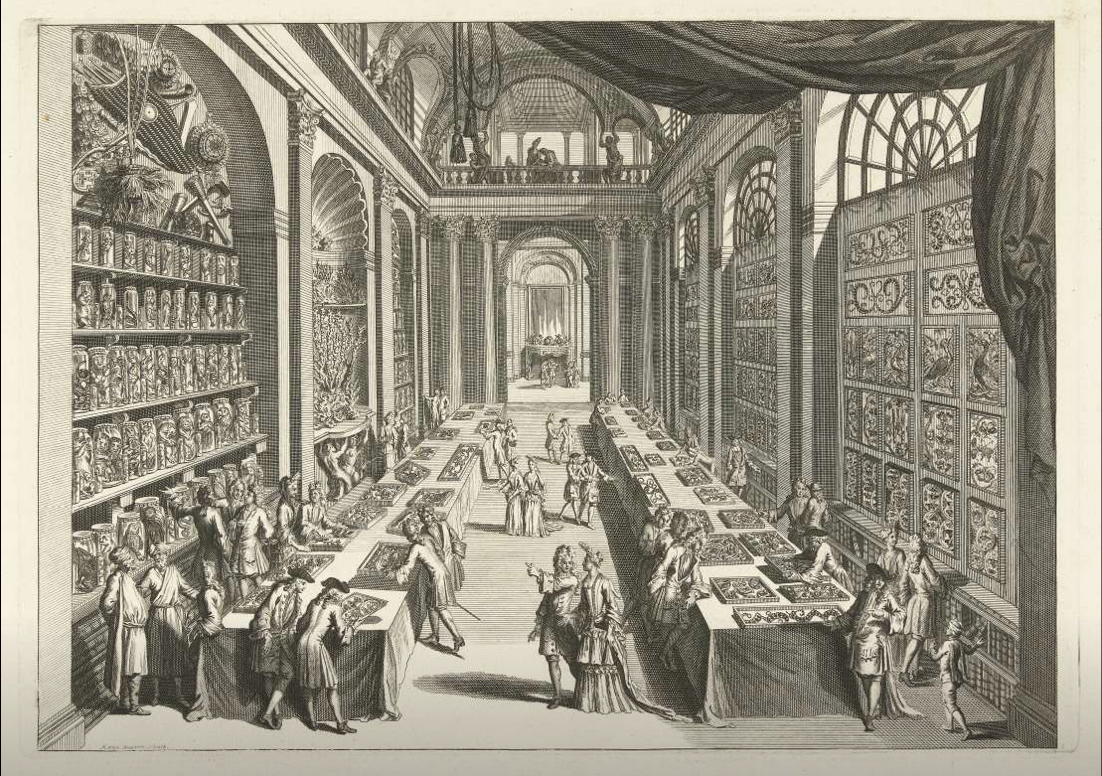 Levinus Vincent?s 1706 ?wonder Theater of Nature.? From Bert van de Roemer.
Levinus Vincent?s 1706 ?wonder Theater of Nature.? From Bert van de Roemer.
It also doesn?t fit with our modern of ideas of museum visiting. While our only image of the Musei Wormiani shows no people, we can get a sense of the way visitors might have interacted with it and other wunderkammer from an image of Levinus Vincent?s 1706 ?wonder Theater of Nature.? It, too, is oddly organized. Its eight cabinets contained, among other things: ?600 phials of animal cadavers in spirits, 288 boxes of indigenous and exotic insects, 32 drawers of shells and crustaceans, 14 drawers of minerals and fossils, and a cabinet with a woodland-like scene created from different kinds of corals and sponges.? Its order is oddly both aesthetic and natural. Like most wunderkammer, it had no labels. Instead, it was hands-on, interactive: look at the visitors opening the cases, removing the objects, discussing what they see and feel and touch (from Bert van de Roemer).
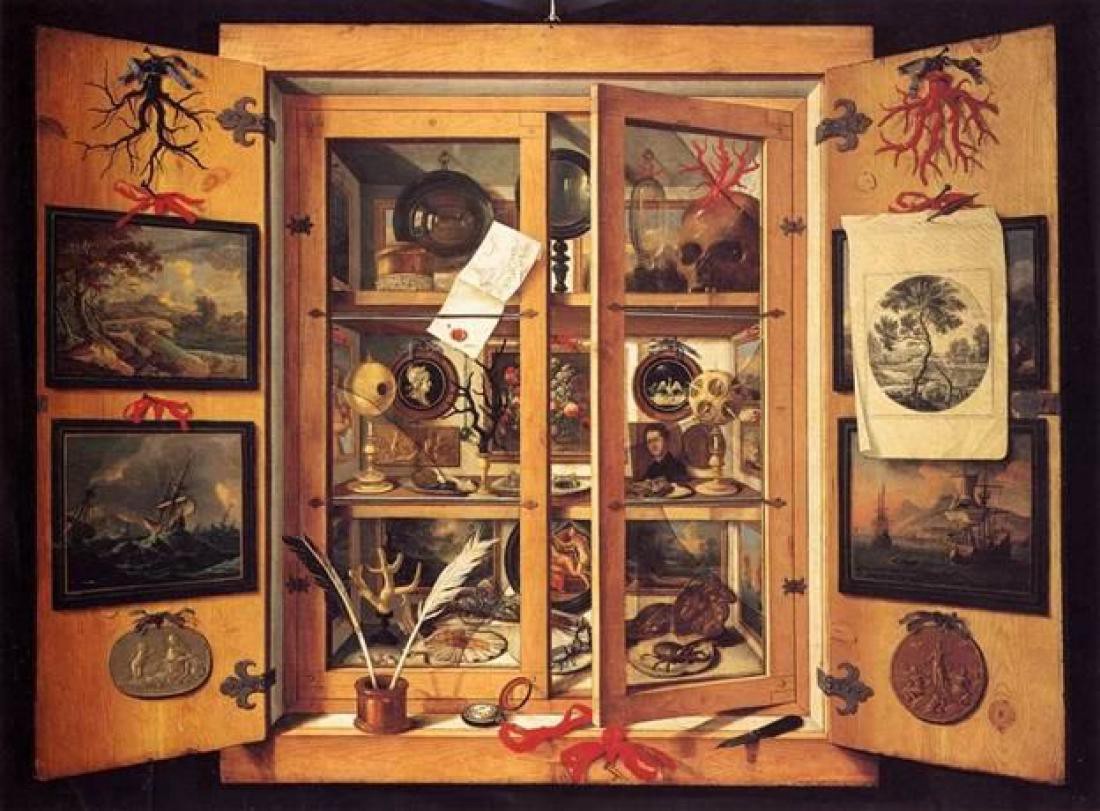 Domenico Remps, ?Cabinet of Curiosities,? 1690s. Courtesy Wikimedia.
Domenico Remps, ?Cabinet of Curiosities,? 1690s. Courtesy Wikimedia.
Art collectors also displayed their treasures in wunderkammer. Here, paintings and objet d?art might be promiscuously mixed with natural wonders, the exotic imports of the New World, the fine creations of craftsmen, personal keepsakes, and memento mori. These cabinets were designed to show wealth and taste and an inquiring mind.
No self-respecting naturalist, prince, or wealthy merchant was without a cabinet of curiosity. Why were they so appealing in early modern Europe? What was going on in the culture that made these odd conglomerations seem like the right way to display artifacts both human and natural?
The sixteenth and seventeenth centuries were an era of discovery, humanism, and science, but also an era permeated by older ideas of magic and sympathy. The combination of these two worldviews shaped the wunderkammer. Hermeticism, a psuedo-ancient belief popular at the time, held that there were always connections between the microcosm and the macrocosm ? the universe, the human body, the big and the small in nature. The idea of ?the great chain of being? encouraged people to look for hierarchical structures that connected God to angels to people to animals to plants to things. The doctrine of signatures ? that herbs resembling various parts of the body would treat ailments of those body parts ? suggested a particular kind of object display. The theater of memory ? a way of organizing facts and ideas as stories in a real or imagined space ? provided a rationale for arranging objects. Together, these ideas offered a way of understanding the world, and viewing objects. Cabinets of curiosity were set up to reflect and encourage this worldview.
 Marchese Ferdinando Cospi?s cabinet of curiosities included taxidermied animals, some of them manmade, weapons ? and a dwarf. Courtesy Wikimedia and Eriko N. Bond
Marchese Ferdinando Cospi?s cabinet of curiosities included taxidermied animals, some of them manmade, weapons ? and a dwarf. Courtesy Wikimedia and Eriko N. Bond
Literary scholar Stephen Greenblatt suggests that museums encourage two kinds of response: resonance and wonder. ?By wonder,? he writes, ?I mean the power of the displayed object to stop the viewer in his or her tracks, to convey an arresting sense of uniqueness, to evoke an exalted attention.? Resonance, on the other hand, is the ?power of the displayed object to reach out beyond its formal boundaries to a larger world, to evoke in the viewer the complex, dynamic cultural forces from which it has emerged.? Cabinets of curiosity did both at the same time. The worldview of the time found wonder in resonance; it saw linkages between things, and between things and spirit and nature, everywhere. Each object was wonderful in itself, and at the same time revealed the secrets of the world.
Art historian Barbara Stafford has explored the way that cabinets of curiosity encouraged this kind of understanding. Juxtapositions, she argues, served to simulate conversation. What did the similarities and difference mean? What were the hidden connections? She suggests that a ?system of sideways looks? characterized these displays, that artifacts ?cacophonously ?chatted? among themselves and with the spectator.?
These heterogeneous, unsystematic, displays sent a message of exoticism and variety. Look at all of these amazing things! What a worldly person the collector must be! What a deep understanding of the secrets of the world he has! But it wasn?t just about knowledge. There was power bound up in this knowledge ? in the Hermetic tradition, as well as in the burgeoning scientific tradition, useful knowledge was power: medical understanding, technological prowess, the power of command over the natural world and the newly discovered lands and peoples across the oceans.
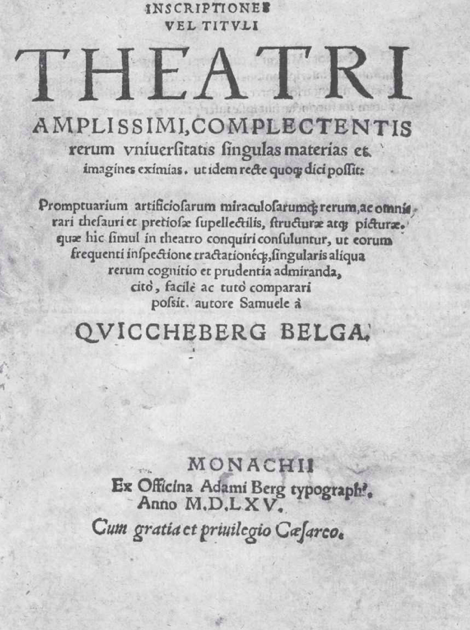 Title page of Quiccheberg?s Inscriptiones.
Title page of Quiccheberg?s Inscriptiones.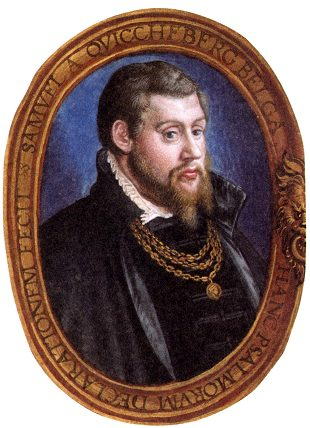 Samuel Quiccheberg. Courtesy Wikipedia.
Samuel Quiccheberg. Courtesy Wikipedia.
The best place to see both the strangeness (from a modern viewpoint) and the power of the worldview is a 1565 book by Samuel Quiccheberg, a Flemish physician, librarian and curator. His Inscriptiones provides the rationale for the wunderkammer. Its effusive title explains all: Inscriptiones or Titles of the most ample Theater That Houses Exemplary Objects and Exceptional Images of the Entire World, So that One Could Also Rightly Call It a: Repository of artificial and marvelous things, and of every rare treasure, precious object, construction, and picture. It is recommended that these things be brought together here in the theater so that by their frequent viewing and handling one might quickly, easily, and confidently be able to acquire a unique knowledge and admirable understanding of things.
Quiccheberg imagined the museum as a place for collecting, research, and display, for self-knowledge and power. He argued that a museum offered practical value. By collecting the right things, putting them in the right order, and examining them, one gains not just knowledge, but also skill and power. ?Above all,? writes historian Bruce Robinson in his introduction to the Getty translation of the Inscriptiones, ?Quiccheberg sees the goal of his ideal cabinet as practical: the acts of collecting and organizing mobilize objects into their greatest usefulness.?
It was practical in two ways. Quicceberg?s museum included workshops for alchemy, printing, metal smithing, apothecary, even armories. This is the kind of practicality that seems, in retrospect, modern. But there was another kind of practicality that is resolutely premodern. Grouping things together according to their formal similarities was, for Quiccheberg, ?an effective strategy for making parts of the invisible network of relations become visible because physical proximity constitutes a real conceptual relationship and thus can be used to generate practical knowledge,? writes Catherine Van Reenan. Putting things in a museum, putting them in order, letting them have those ?sideways looks?; that itself would lead to new knowledge, new technologies.
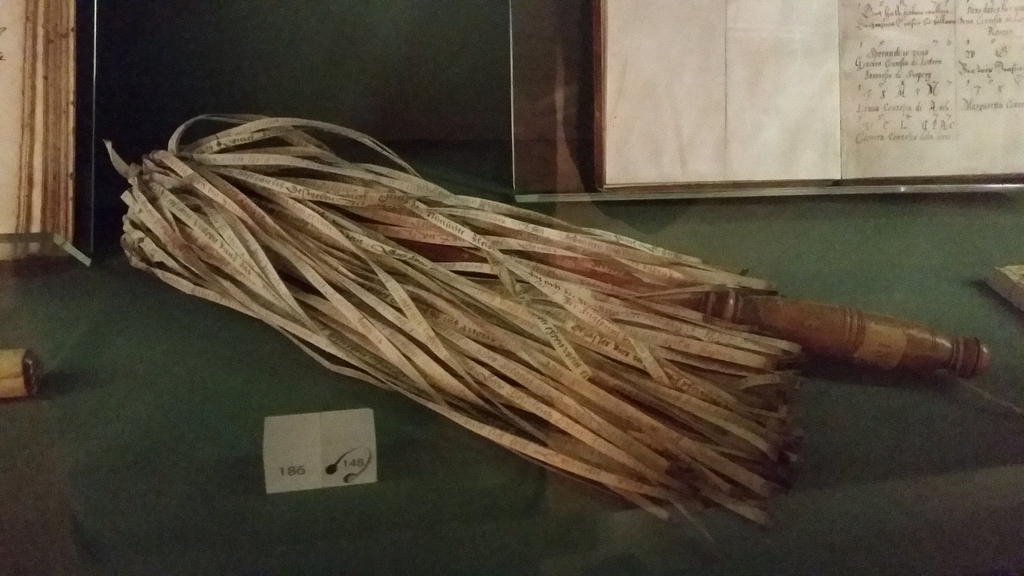 A object that suggests the profound strangeness of connections encouraged by the cabinet of curiosity: a chronicle from around 1600, made in Augsburg, consisting of single strips of paper bound together, each relating one event. At Ambras Castle. Courtesy Jef Schaeps?
A object that suggests the profound strangeness of connections encouraged by the cabinet of curiosity: a chronicle from around 1600, made in Augsburg, consisting of single strips of paper bound together, each relating one event. At Ambras Castle. Courtesy Jef Schaeps?
The cabinet of curiosities is odder than it seems. We look back and see strange things, arranged in strange ways. That?s a modern way of looking at objects. We don?t see what it meant for the makers of these cabinets. For them, the objects and their arrangements revealed secrets. They were places where men could use art and artifacts to understand and shape their world.
2. The modern museum
In the late 18th century the cabinet of curiosity went out of fashion, to be replaced by the modern museum. The magical worldview was replaced with the new ideas of the Enlightenment, and the old rules of magic and sympathy were replaced by new rules: reason, orderliness, system, science. Francis Bacon, the philosopher of modern science who proposed new ideas about the importance of organized collections in his Advancement of Learning, called wunderkammer ?frivolous impostures for pleasure and strangeness.? The museum, argues Steven Mullaney in The Place of the Stage, was not a new kind of cabinet of curiosity; rather, it ?rises from the ruins of such collections.? ?The modern museum,? he continues, ?organizes the wonder-cabinet by breaking it down ? that is to say, by analyzing it, regrouping the random and the strange into recognizable categories that are systematic, discrete, and exemplary.?
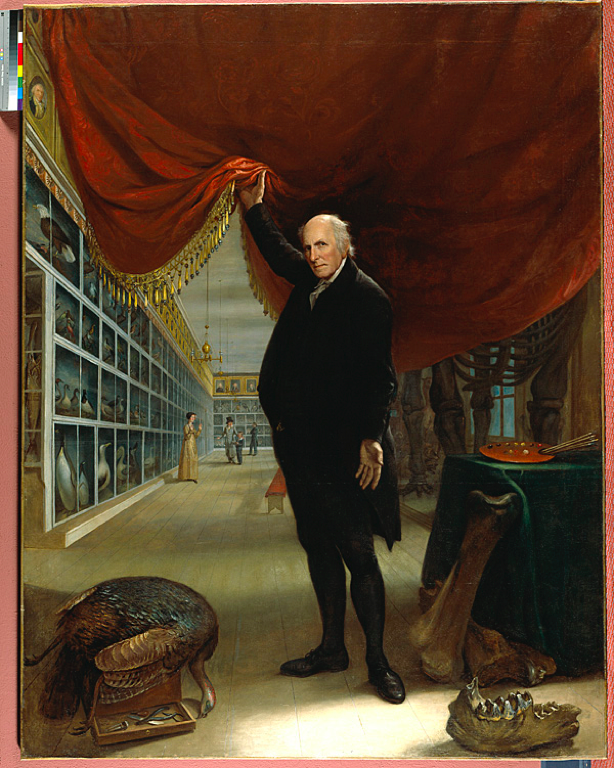 Charles Wilson Peale?s? Artist in his Museum (1822) Courtesy Pennsylvania Academy of Fine Arts.
Charles Wilson Peale?s? Artist in his Museum (1822) Courtesy Pennsylvania Academy of Fine Arts.
Charles Wilson Peale?s? Artist in his Museum (1822) represents this new ideal. Here, everything is in order. Portraits of American heroes are neatly arranged above a rectilinear grid of natural specimens, arranged in Linnaean order. Everything is in cases. Everything is organized to tell a story. Visitors respectfully observe, and learn. The museum, as opposed to the cabinet of curiosities, is orderly, public, designed for teaching, not exploration.
Over the course of the next century, these rules would become the guiding principles for museums of all types. George Brown Goode, director of the US National Museum, wrote in 1889: ?The people?s museum should be much more than a house full of specimens in glass cases. It should be a house full of ideas, arranged with the strictest attention to system.?
The details of that system would vary by type of museum. History museums turned to chronology. Natural history museums organized things by taxonomically, but genus and species, according to the Linnaean system, and, by the late nineteenth century, to show Darwinian evolution. Art museums organized according to place and school. A picture collection not arranged by school and artist, wrote art historian Jean-Baptiste-Pierre Lebrun in 1793, is ?as ridiculous as a natural history cabinet arranged without regard to genus, class, or family.?
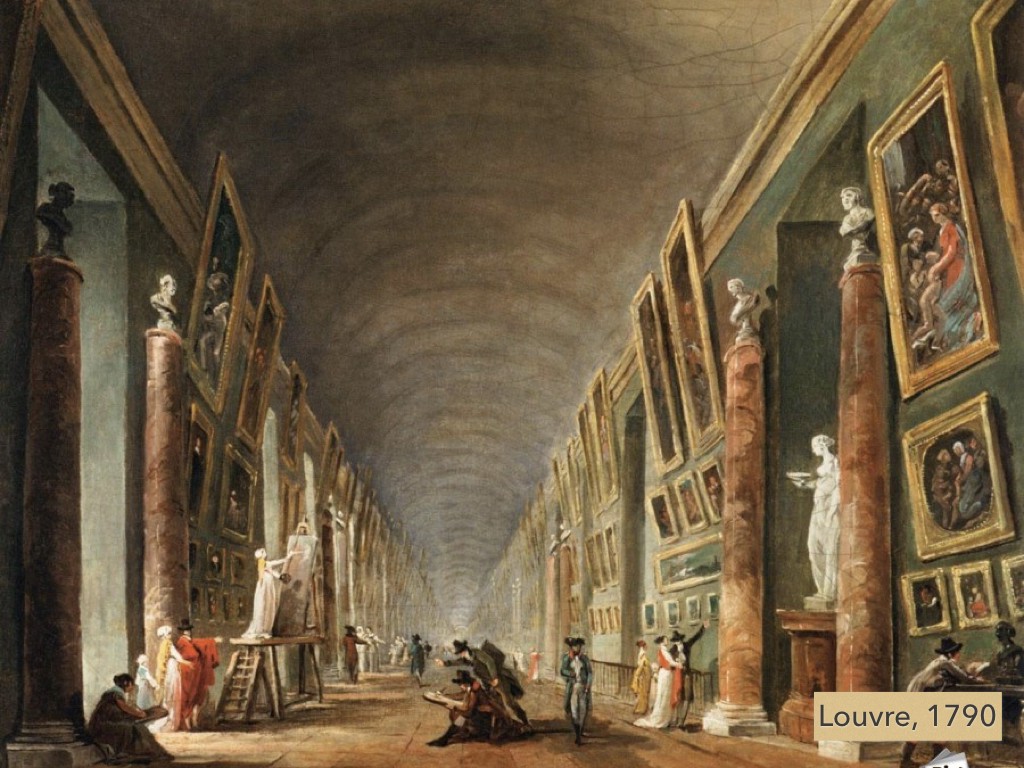
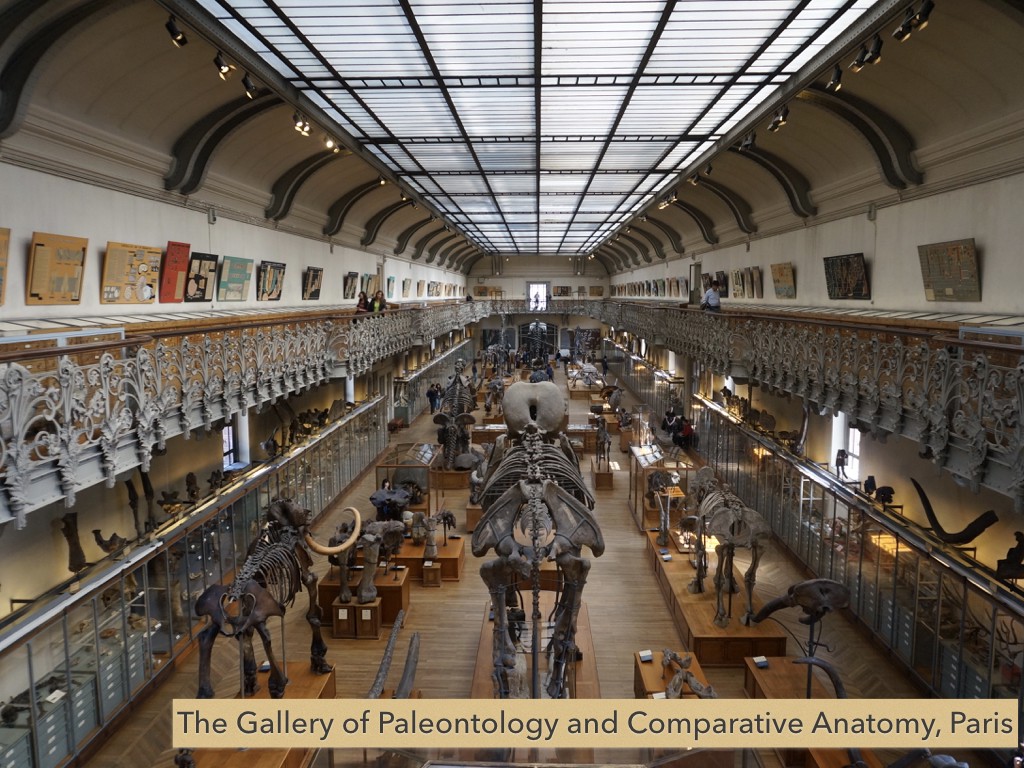
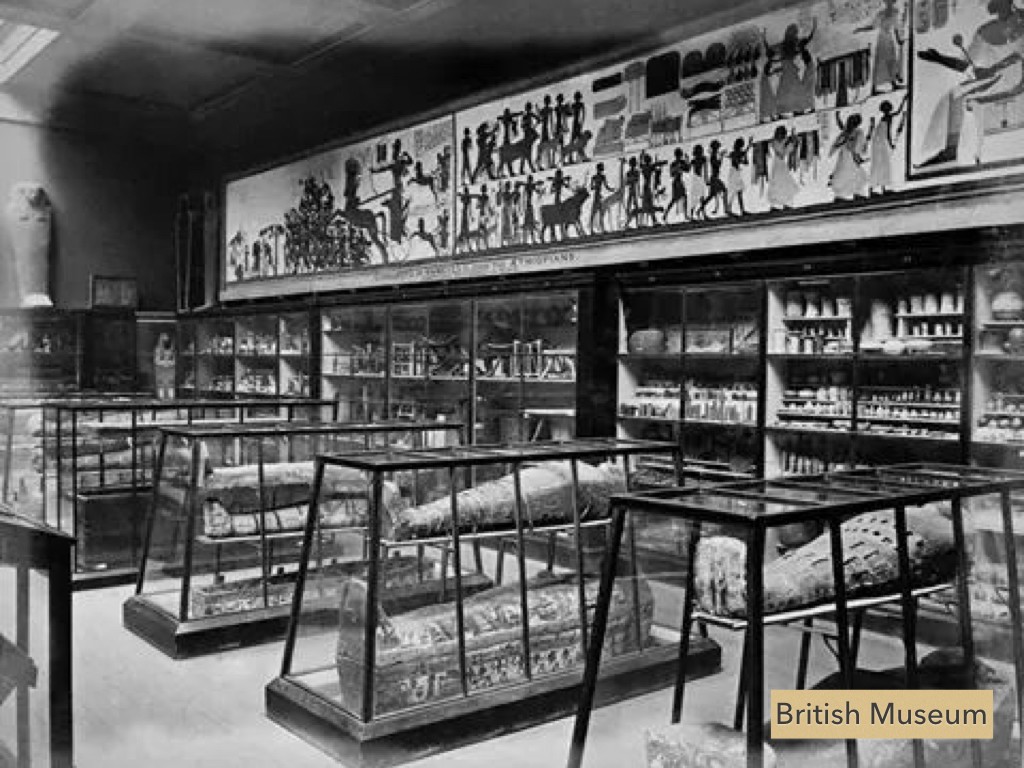


Orderliness was a way of teaching, and it could reveal a variety of truths. Natural history museums used phylogenetic arrangement to reveal the order of the natural world. At the Smithsonian at the turn of the twentieth century, technology was arranged in ?synoptic series? to show progress. At the Field Museum in Chicago, a 1930 exhibition titled ?The Races of Man? presented an idea of racial progress.
Just as early modern cabinets of curiosity reflected a philosophical understanding of the world, so too did the modern museum. Greenblatt?s wonder and resonance was reinterpreted. Art objects evoked wonder. Other objects were resonant, reaching out to ?to evoke in the viewer the complex, dynamic cultural forces from which it has emerged and for which it may be taken by a viewer to stand.?
Objects became metonyms, that is, representatives of a larger world. The museum made the implicit argument that a visitor could understand the world by looking at a few objects out of their original context, but in a new, properly organized context. Historian Carlo Ginsburg calls this new paradigm ?semiotic? or ?conjectural?; objects held clues to the larger world. They were specimens, or witnesses. Organization and juxtaposition within the museum, every exhibition implies, captures a hidden truth of the world itself.
These changes were reflected in the way that museums presented their objects. Jonathan Crary notes in ?Unbinding Vision? that ?beginning in the early nineteenth century, the way people thought about vision changed? rather than an observer just seeing what he?s shown, he determines what to look at, what he pays attention to.? Museums began to consider the visitor as part of the equation. They put paintings into frames and objects on pedestals, and added text to guide the visitor through exhibitions.
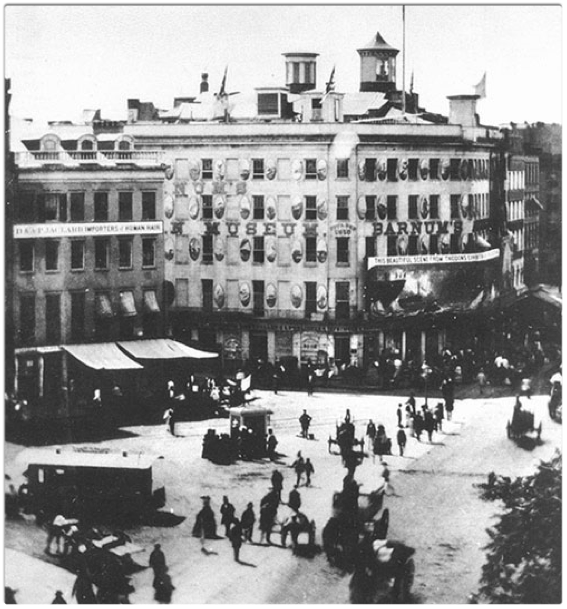 Barnum?s American Museum
Barnum?s American Museum
Not every museum adopted these new principles. While the early modern cabinet of curiosity, with its distinctive worldview, disappeared as that worldview did, the appeal of miscellaneous collection of artifacts, without the rigorous organization of the modern museum, remained. P.T. Barnum?s American Museum, for example, showed what one visitor called ?unnatural curiosities from every part.?
Other museums, particularly those established by individuals, sidestepped the organizational straightjacket of the more academically and cultural acceptable museums. The Pitt Rivers Museum maintained the idiosyncratic ordering and dense displays of its founders. The Barnes Foundation mixed paintings and iron work and decorative art from around the world because its founder, Albert C. Barnes, was interested in teaching art, not art history. The Gardner Museum offered a very personal approach to art: it was organized to please Mrs. Gardner. The Freer Gallery of Art reflected the ideas of its idiosyncratic creator.
But almost every large public museum adopted the modern form of museum organization. They took their collecting and teaching seriously, and order was the key to collecting and teaching. There was no room for the randomness and messiness and open-ended connections of a cabinet of curiosities in the modern museum.
3. The Modern Cabinet of Curiosities
The cabinet of curiosities experienced a revival in the late twentieth century. For two centuries, the museum had reigned supreme as a way to display art and artifact, a remarkably successful tool for preservation, research, and teaching. But by the end of the twentieth century, reaction against its strict rules for organization and display were building. The museum, like the Enlightenment it epitomized, had come to seem out of date. Its collections were a reminder of colonialism. Its methods seemed dogmatic, narrow-minded, an attempt to enforce ideas that reinforced racial, social and cultural hegemony. Its relationship to the public had come to seem undemocratic.
There were many responses to the crisis of the museum: new educational schemes, new ways to collect, and new kinds of exhibitions. One of these was actually an old kind of exhibit: the wunderkammer.
The modern cabinet of curiosities offered a way to reimagine museum collections and display. Starting in the 1980s, museums began to display art and artifact in this new-old way. Artists were first, arranging personal collections into installations that used their own logics, their own categories. Artist/curators mined the museum, reorganizing collections both to call attention to the narrowness of most museum exhibitions and to offer new interpretations. And some museum curators turned to wunderkammer to explore the historical roots of their collections and to raise questions about both history and the future.
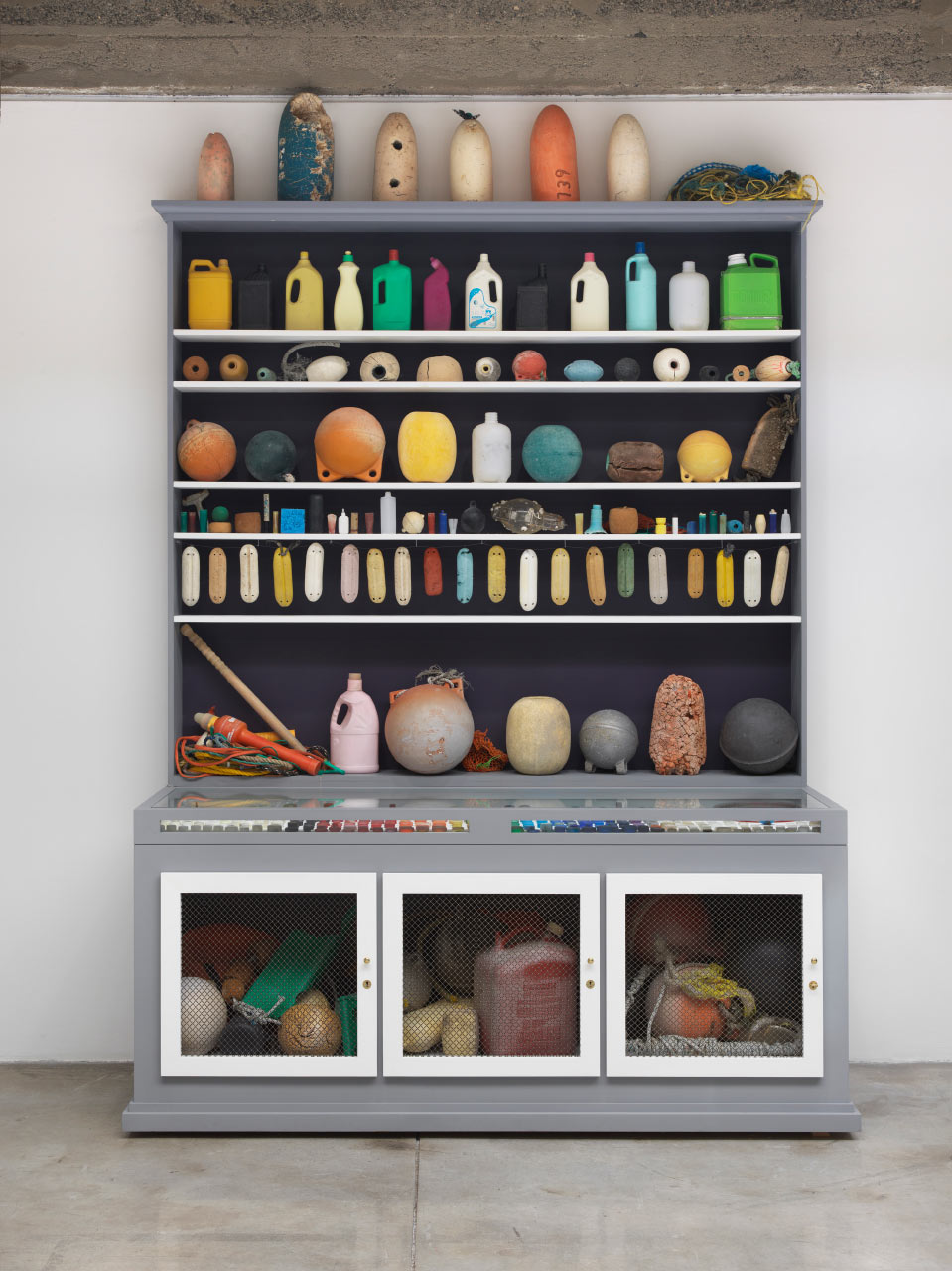
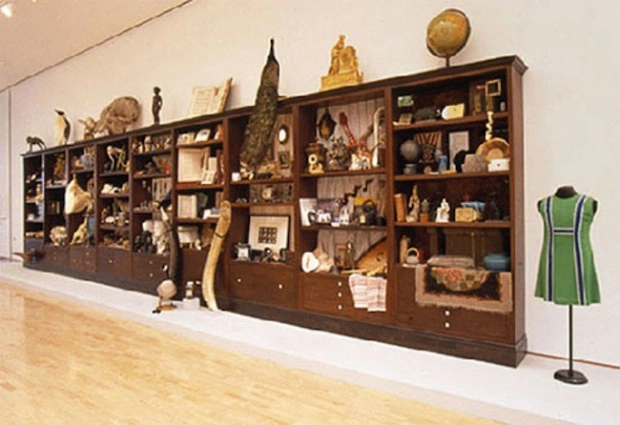 Mark Dion, Cabinet of Marine Debris 2014, and Cabinet of Curiosities for the Wiseman Art Museum, 2000.
Mark Dion, Cabinet of Marine Debris 2014, and Cabinet of Curiosities for the Wiseman Art Museum, 2000.
Mark Dion was one of the first artists to explicitly reinvent the ancient cabinet of curiosities. Some of his projects brought together new collections in a way that recalled the old cabinets. Some rearranged museum collections to suggest how organization could provide new insight. He explained why he found the model so valuable: ?I want to direct viewers. I want to give them clues as to what I?m thinking about, because the work also plays with a sophisticated reading and contradictions ? one piece might say something and the other piece might seem to argue the opposite. I want to give viewers a lot of power and control over discovering their own position in relationship to the works, which are suppositions, not declarative statements.?
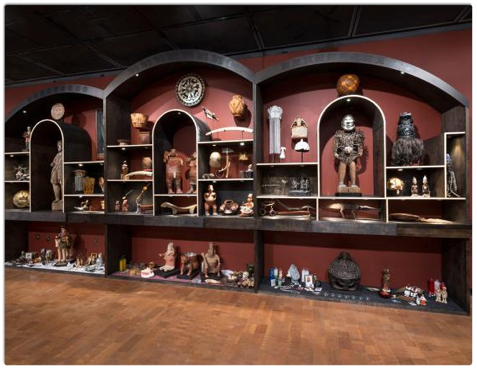 Amalia Mesa-Bains, New World Wunderkammer, Fowler Museum, 2013
Amalia Mesa-Bains, New World Wunderkammer, Fowler Museum, 2013
Other artists are more directive in their curatorial reorganizations. Chicana artist Amalia Mesa-Bains worked with the Fowler Museum?s collections to create New World Wunderkammer, three cabinets of curiosity representing Africa, the indigenous Americas, and mestizaje. She sought to ?restore spiritual meaning,? to ?recontextualize hundreds of objects within the themes of memory, struggle, loss, and wonder,? to offer a new interpretation for objects that had been collected other purposes, for scientific study, or as tokens of the exotic.
The artist/curator?s cabinet of curiosities is a species of institutional critique, a way of exploring (and sometimes undermining) the roots and rules of the museum. It is also, as Areti Adamopoulou and Esther Solomon note in their essay on cabinets of curiosities, a way ?not only to get rid of strict taxonomies, but also to try to reconnect the human to the natural? ? to replace museum rules with values that seem ?engaging, intriguing and appropriate for today?s audiences.?
 The Wadsworth Atheneum?s ?Cabinet of Art and Curiosity?
The Wadsworth Atheneum?s ?Cabinet of Art and Curiosity?
Museum curators also turned to wunderkammer.A few museums used the exhibit style to recognize, and acknowledge, their roots. The British Museum?s ?Enlightenment Gallery? displays art and artifacts, many of them long off display, to ?reveal the way in which collectors, antiquaries and travellers during this great age of discovery viewed and classified objects from the world around them.? The Wadsworth Atheneum?s ?Cabinet of Art and Curiosity? recreates an early modern wunderkammer both as an educational display on the roots of the museum, and also as ?an immersive, interactive environment,? that captures something of the excitement of the earlier model of display.
 Visible storage / study center at the Brooklyn Museum
Visible storage / study center at the Brooklyn Museum
Museums also used the style of the cabinet of curiosities in their increasingly popular displays of open storage. Although most open storage displays kept the museum categories intact, in its openness to wonder and a range of visitor interpretation it captured something of the wunderkammer.
Artists and curators reinvented the cabinet of curiosity to address modern concerns. It seems more fun, more personal, more open-ended, and more evocative than the chronological, rectilinear, educational, even coercive displays that had vanquished it two centuries earlier. The wunderkammer seems more fitting to an age of hybridity and critique. While it no longer reflects the worldview of the original, a whiff of the magic that shaped it survives to enchant us today.
This essay is based on a talk for a class in the Museum Concentration at Smith College. My thanks to Maggie Newey for the invitation, and to the class for their good questions.
For more on the history of museums, see my Inside the Lost Museum: Curating Past and Present.
